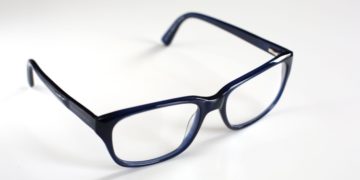For photographers, whether beginners or seasoned professionals, choosing the right lens can be one of the most exciting yet overwhelming decisions. Cameras may be the backbone of photography, but the lens is what truly shapes the image—affecting clarity, depth, and perspective. With so many options available, from wide-angle to telephoto, prime to zoom, the key lies in finding the best lens suited for your preferred style of photography.
In this guide, we’ll explore different lens types, their best use cases, and how to make the right decision for your craft.
Why the Lens Matters More Than You Think
A common misconception is that a high-quality camera alone guarantees incredible photos. While the camera body provides the foundation, the lens is what determines how much light enters, the field of view, and the overall rendering of the image.
A photographic lens essentially acts as the “eye” of your camera. It controls how subjects are captured, whether you want sharp landscapes, beautifully blurred portraits, or detailed wildlife shots from a distance. Investing in the right lens can transform the quality of your work far more than simply upgrading to a newer camera body.
Understanding the Main Types of Lenses
Different photography styles demand different lenses. Here are the most common categories to consider:
1. Standard/Prime Lenses
- Best for: Everyday photography, portraits, travel
- Features: Fixed focal length, usually 35mm or 50mm
- Why choose it: Offers excellent sharpness, wide apertures for low-light shooting, and beautiful background blur (bokeh).
2. Wide-Angle Lenses
- Best for: Landscapes, architecture, group shots
- Features: Focal lengths typically under 35mm
- Why choose it: Captures more of the scene in a single frame, perfect for expansive views.
3. Telephoto Lenses
- Best for: Wildlife, sports, events
- Features: Long focal length (70mm to 200mm and beyond)
- Why choose it: Brings distant subjects closer, isolates subjects with shallow depth of field.
4. Macro Lenses
- Best for: Close-up photography, product shots, nature details
- Features: High magnification ratios (1:1 or more)
- Why choose it: Captures extraordinary detail in small subjects, like flowers, insects, or jewelry.
5. Zoom Lenses
- Best for: Versatility across multiple photography styles
- Features: Variable focal length (e.g., 24–70mm)
- Why choose it: Ideal for photographers who want flexibility without switching lenses constantly.
Matching the Lens to Your Style
Your photography style plays a major role in determining the best lens. Let’s break it down:
- Portrait Photography: A 50mm or 85mm prime lens with a wide aperture (f/1.8 or f/1.4) for creamy bokeh and flattering subject focus.
- Landscape Photography: A wide-angle lens around 16–35mm to capture the depth and breadth of nature.
- Street Photography: A discreet 35mm lens offers versatility, speed, and a natural perspective.
- Wildlife Photography: A telephoto lens like 100–400mm helps capture subjects from afar without disturbing them.
- Event Photography: A zoom lens such as 24–70mm or 70–200mm provides flexibility for unpredictable settings.
Key Factors to Consider When Choosing a Lens
1. Focal Length
Focal length affects how much of the scene is captured and how close subjects appear. Wide-angle lenses (short focal length) capture more of the frame, while telephoto lenses (long focal length) zoom in closer.
2. Aperture
The aperture determines how much light enters the lens and influences depth of field. Wide apertures (like f/1.4) allow for low-light shooting and blurred backgrounds, while smaller apertures (like f/8) are better for landscapes with sharp details.
3. Compatibility
Always ensure the lens is compatible with your camera body. Different systems—Canon, Nikon, Sony, Fujifilm—have unique mounts and requirements.
4. Weight and Portability
If you’re a travel or street photographer, lugging a heavy lens may be impractical. Consider compact prime lenses for mobility.
5. Budget
Lenses vary greatly in price, from entry-level options to professional-grade glass. While budget is a factor, remember that a great camera lens can last decades if cared for properly.
The Future of Lenses in Photography
Modern photography is constantly evolving. Today’s lenses are not only sharper and more durable but also integrate advanced technologies like image stabilization, silent autofocus motors, and weather sealing. For professional photographers, these enhancements can mean the difference between capturing or missing a crucial shot.
Additionally, mirrorless systems are gaining popularity, offering lighter and more compact lens options without compromising on image quality. This trend is shaping the way photographers approach both hobby and professional work.
Why Investing in Quality Lenses Is Worth It
Unlike camera bodies, which often become outdated within a few years, lenses retain their value for much longer. A high-quality lens purchased today can still be relevant a decade later, making it one of the smartest long-term investments for photographers.
Moreover, the right lens expands creative possibilities. It allows photographers to experiment with depth, framing, and mood, opening doors to new styles and opportunities.
Final Thoughts
Choosing the perfect lens is about understanding your style, knowing the strengths of each type, and balancing budget with performance. While camera bodies may evolve quickly, a high-quality lens becomes a trusted partner in your creative journey.
For anyone serious about photography, the key lies in investing in glass that enhances your skills, complements your goals, and unlocks the true potential of your camera.
And remember, whether you’re after wide-angle landscapes, intimate portraits, or action-packed sports shots, Diamonds Camera offers a wide selection of professional lenses to help you bring your vision to life.











































































